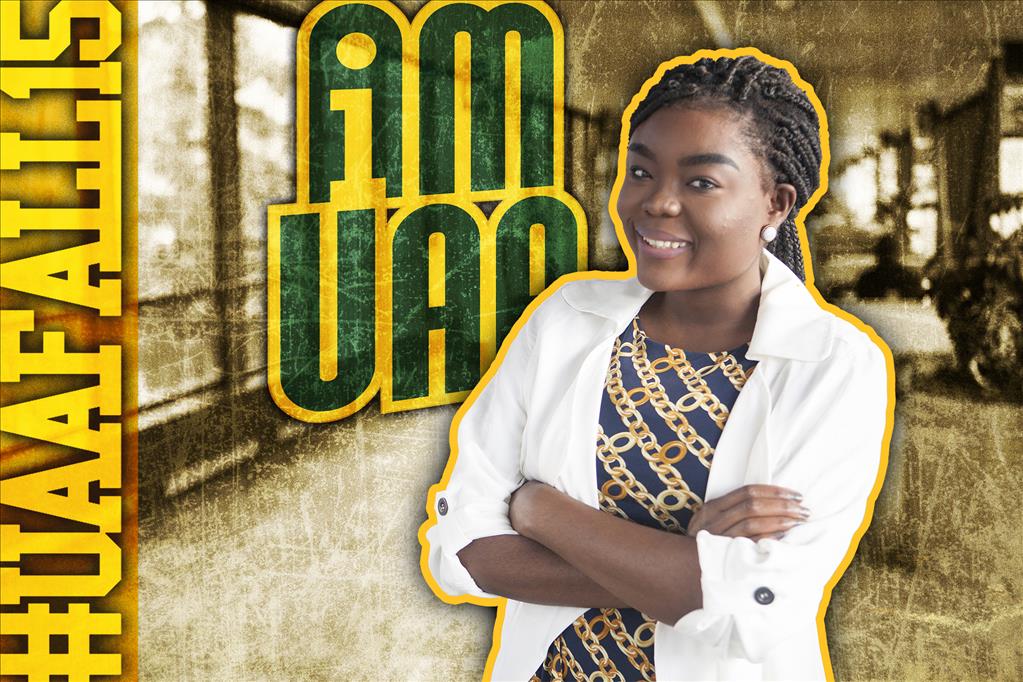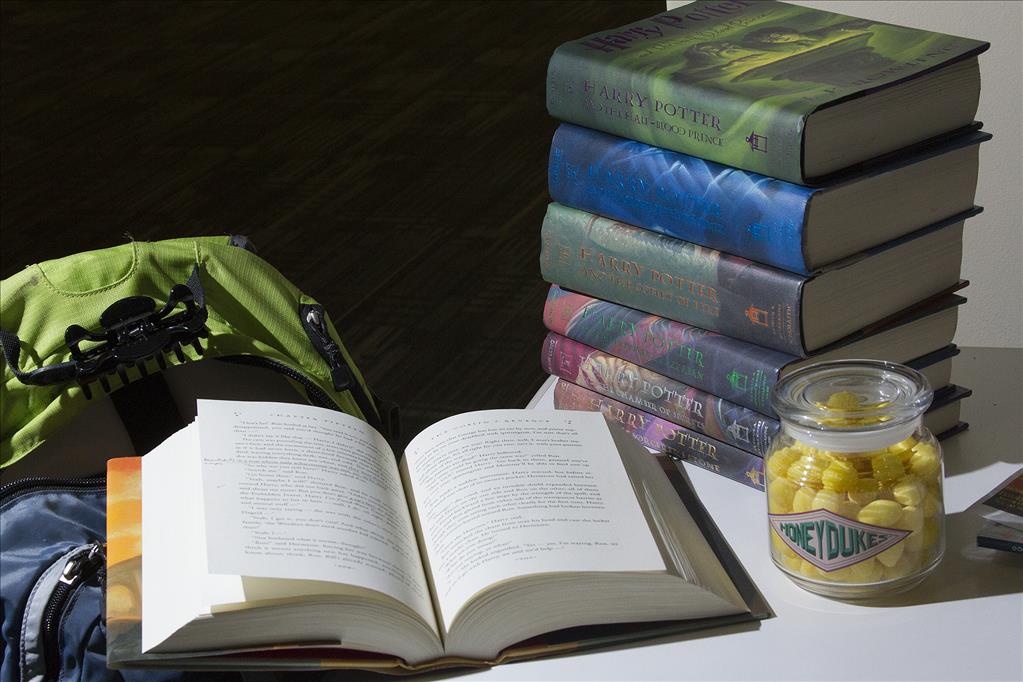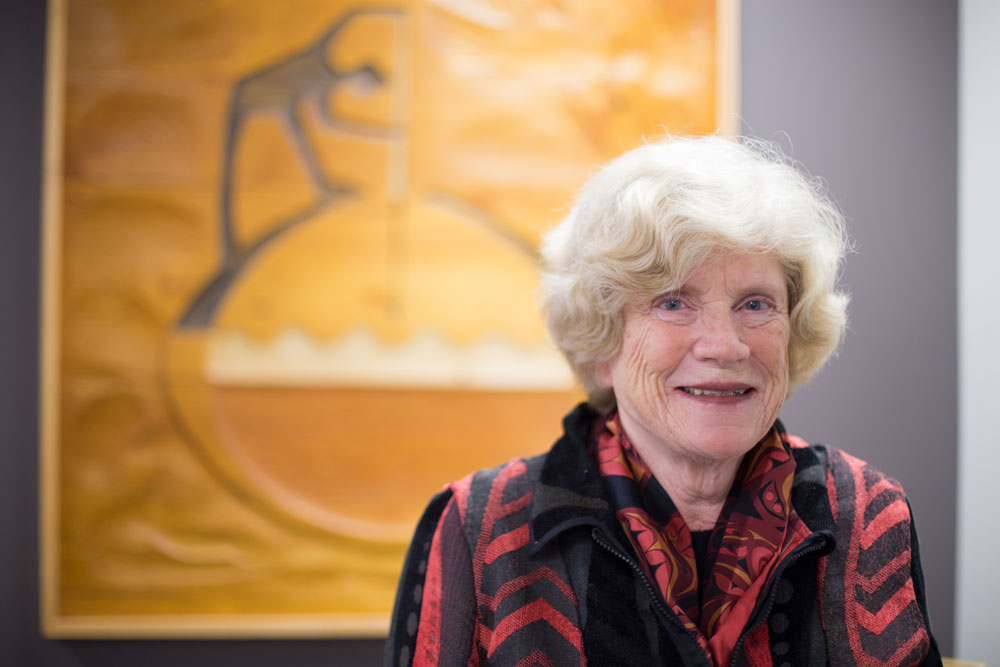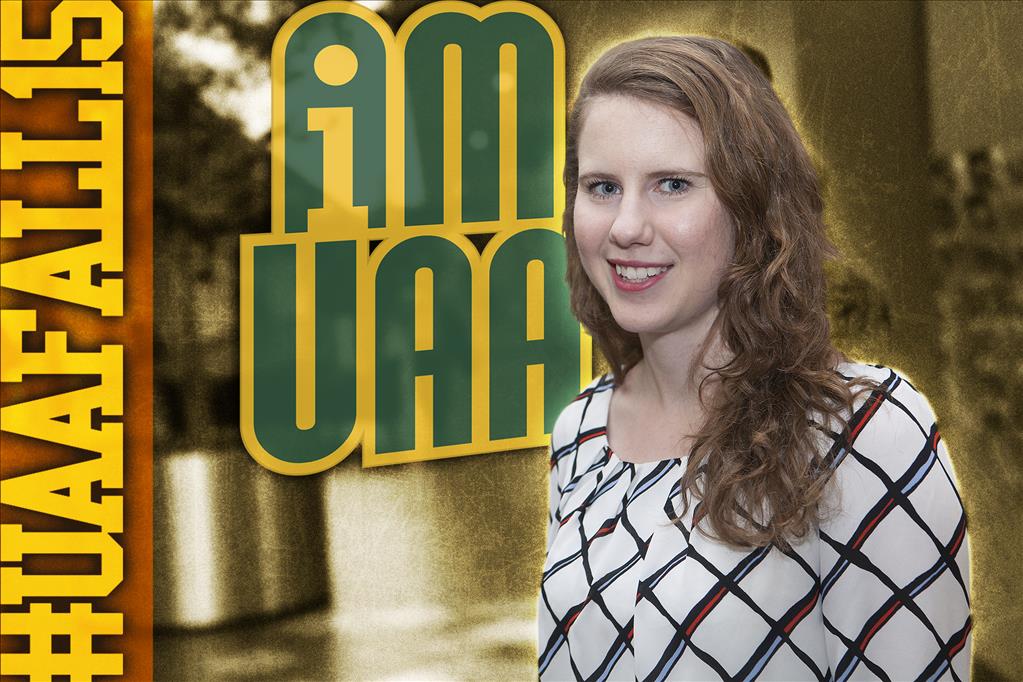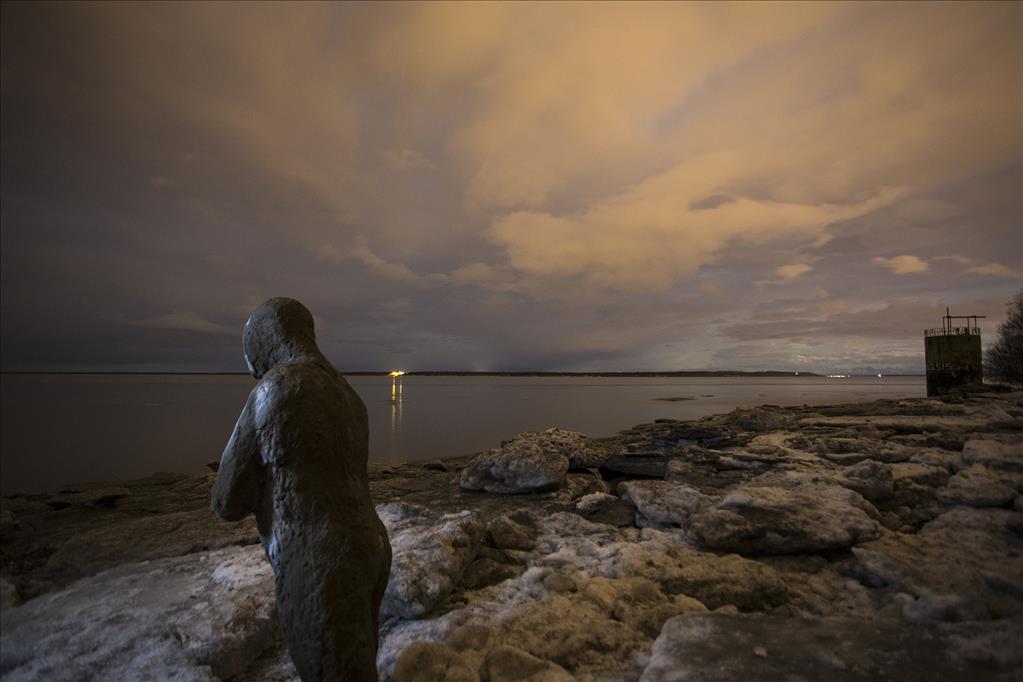Native Voices displays history, culture of indigenous health
by Tracy Kalytiak |
Just outside the doors of the Alaska WWAMI offices is a series of panels inviting viewers to hear about and see how indigenous cultures of health-ancient and modern-weave through the lives of modern-day American Indians, Hawaiians and Alaska Natives.

Dr. N. Jane Shelby, director of Alaska WWAMI, asked the National Library of Medicine to display "Native Voices" at UAA. (Photo by Philip Hall/University of Alaska Anchorage)
"I'm using it this semester for medical students, for a class in cross-cultural medicine and rural frontier medicine in Alaska," said Dr. N. Jane Shelby, director of the Alaska WWAMI School of Medical Education, about "Native Voices: Native Peoples' Concepts of Health and Illness," a National Library of Medicine exhibition WWAMI is hosting. "They'll be using the exhibit to hear voices, perspectives from Native people on health and healing and illness and everything that's available, including Native plant medicine, as part of the class."
The exhibition delves into the history and cultures of indigenous medicine, Native peoples' stories about the ways epidemics, federal legislation, the loss of land and the inhibition of culture in the 19th and 20th centuries influenced the health of Native individuals and communities today.
Viewers may search the exhibition by tribe to find relevant interviews, objects and images and timeline entries.
A search for "Unangan," for example, reveals a timeline entry for 10,000 B.C. explaining those peoples in the Aleutian Islands were capable surgeons, according to archeological evidence, and understood anatomy because they autopsied their enemies and slaves. They visited hot springs for healing, eased childbirth through saunas and used massage to reposition a fetus when necessary.
Another search, for "Iñupiaq," brings up a 1920s timeline entry for Della Keats, a woman from Kotzebue who lived a traditional subsistence lifestyle, educated herself in anatomy and traditional healing practices and trained in the 1920s to be a midwife-she delivered babies for 30 years as well as treating Alaska Natives and non-Natives and teaching patients about good health practices.
The voices of 12 Alaskans, including Shelby, are among dozens of interviews included in the exhibition. People can use the iPads to hear those voices.

People may see and hear interviews about Alaska Native, Hawaiian and American Indian health and culture via these interactive displays. (Photo by Philip Hall/University of Alaska Anchorage)
• Shelby relates how Alaska Native students benefit from access to WWAMI, the collaborative University of Washington medical school program in which universities in Alaska and four other Northwestern states participate.
The president of the American Association of Indian Physicians this year, Donna Galbreath, an Athabascan, is a WWAMI alumna, Shelby said in her interview.
"But we need more students," Shelby said. "This is part of reaching out and doing a better job of bringing up rising students from rural and underserved communities because it's not only the right thing to do, but they also are more likely to practice near their home communities."
• Daniel Dickerson, an Inupiaq, double board-certified psychiatrist, addiction psychiatrist and assistant research psychiatrist at UCLA, focuses his research on substance abuse among Alaska Natives and American Indians and is developing drum-assisted recovery therapy for Native Americans.
"It's a developmental project to...pretest drumming intervention for American Indians and Alaska Natives with substance abuse problems," he said. "You make your own drum and learn from our cultural leaders on what the materials represent, what the purpose of the drum is, and we kind of introduce them that way."
• Dr. Ted Mala, Iñupiat Eskimo, was the first male Alaska Native physician and works as director of tribal relations at the Alaska Native Medical Center. He talked about the ways cultural shifts affected the health and wellness of Alaska Natives.
"I think there is a great movement for people to learn from elders, to relearn their culture, relearn who they are," he said. "And not to go back to living in a museum, not to go back to going to the [Alaska Native] Heritage Center and visiting an Eskimo family, but basically to figure out how to balance life and live in two worlds with one spirit. Because one is not going to go away and the other one is not going to go away...until you find who you are and what you are and yourself, you're always going to be kind of transiting in limbo."
• Katherine Gottlieb, an Aleut, is president and CEO of Southcentral Foundation. She discusses her Family Wellness Warriors Initiative, which addresses domestic abuse and child neglect in Alaska Native communities.
Gottlieb experienced abuse and neglect firsthand while growing up as the child of an alcoholic mother.
"I share my story openly to help break the silence with other people," she said. "In sharing story, maybe people can relate to me and how I've walked this out and where a rehabilitation could come and how a community can actually rise above, maybe, circumstances and continue on with life."
Native Voices, on the third floor of UAA's Health Sciences Building, will be displayed through March 6, from 8 a.m.-5 p.m. For more information, visit the Native Voices website. Want to bring large groups and/or classes? Please contact Nancy Hall at nancy@uaa.alaska.edu or (907) 786-4789 for scheduling.
Written by Tracy Kalytiak, UAA Office of University Advancement
 "Native Voices displays history, culture of indigenous health" is licensed under a Creative Commons Attribution-NonCommercial 4.0 International License.
"Native Voices displays history, culture of indigenous health" is licensed under a Creative Commons Attribution-NonCommercial 4.0 International License.










